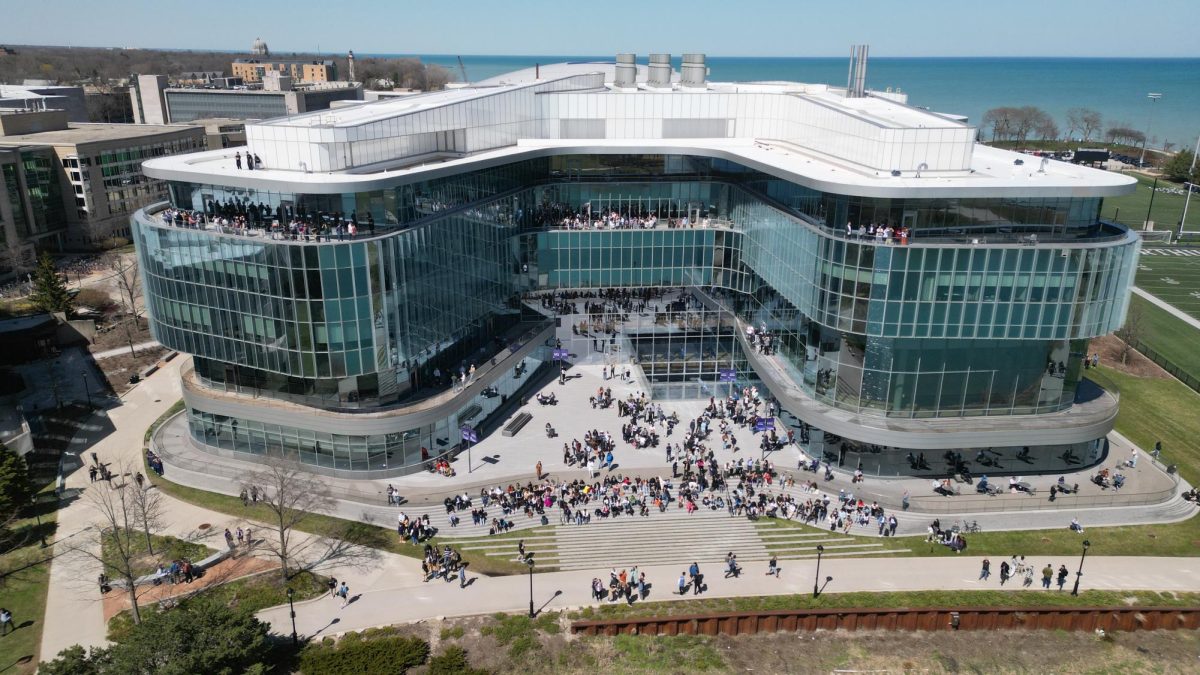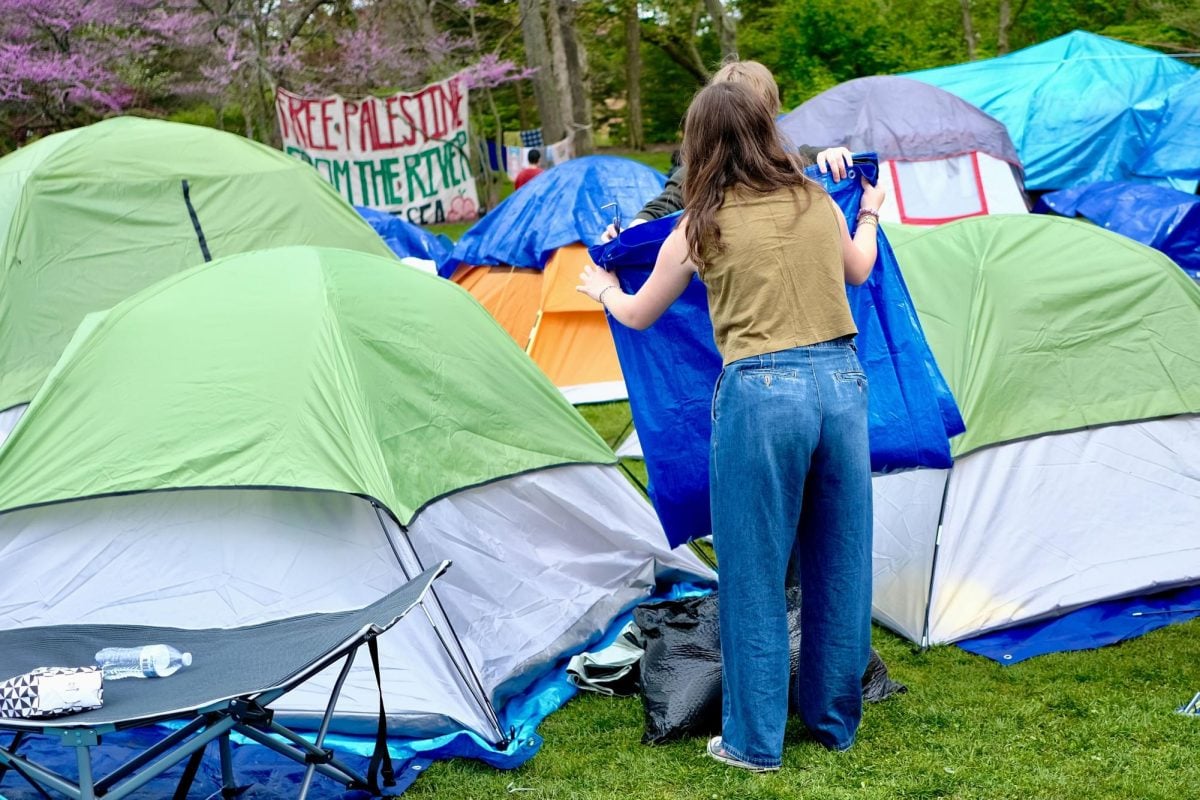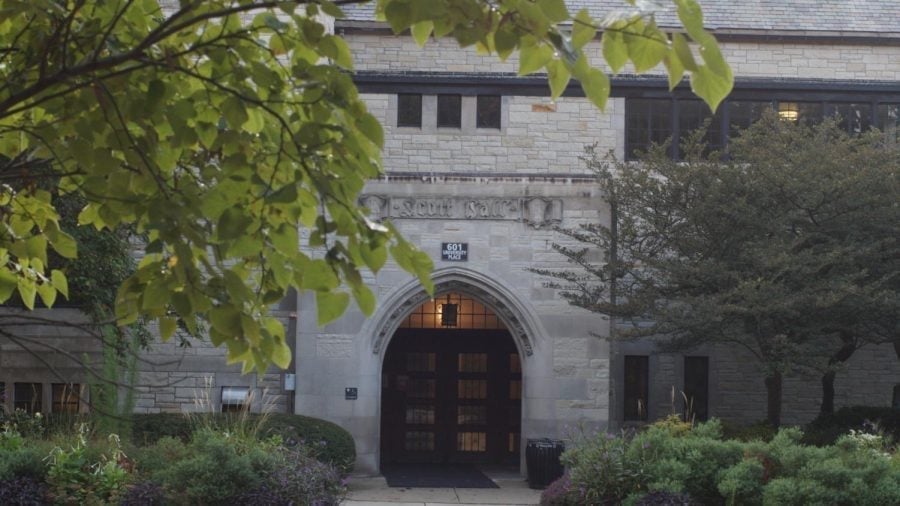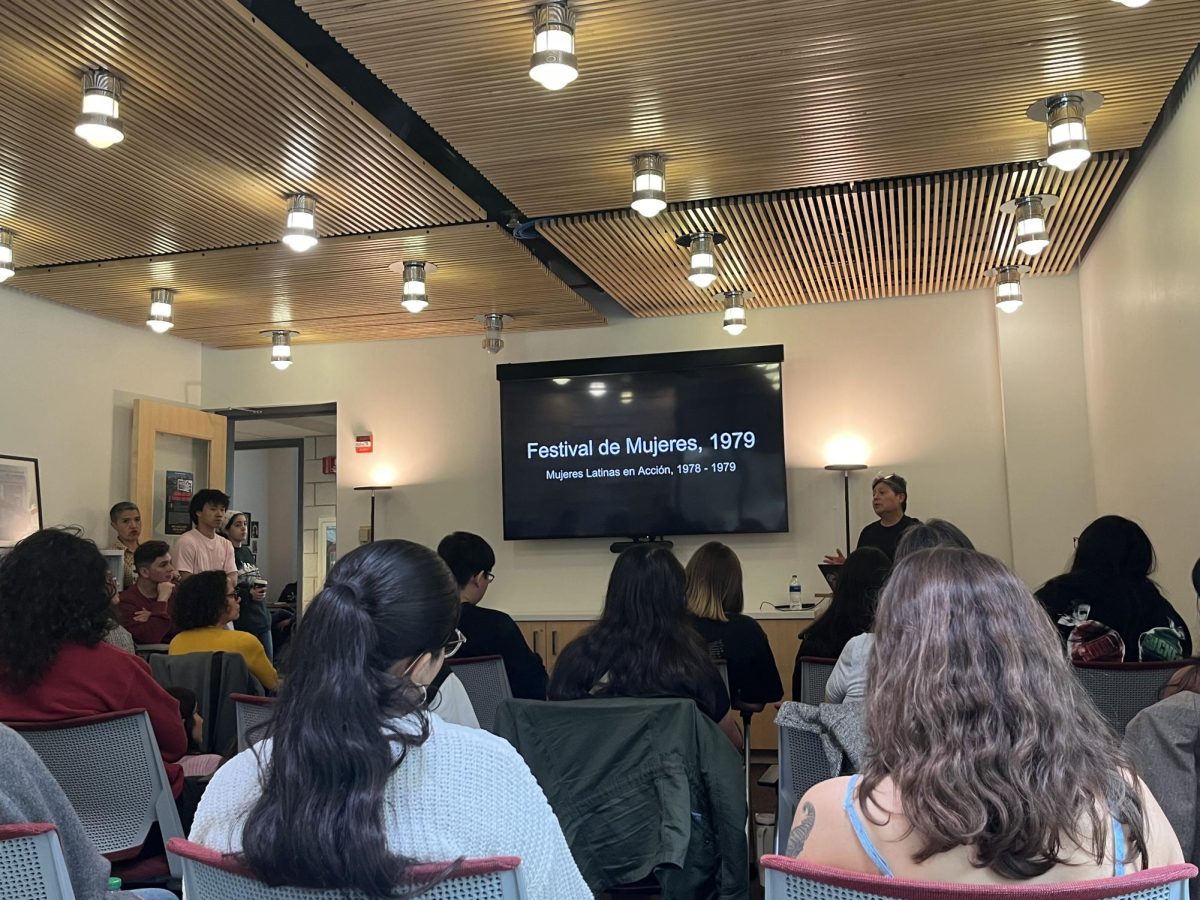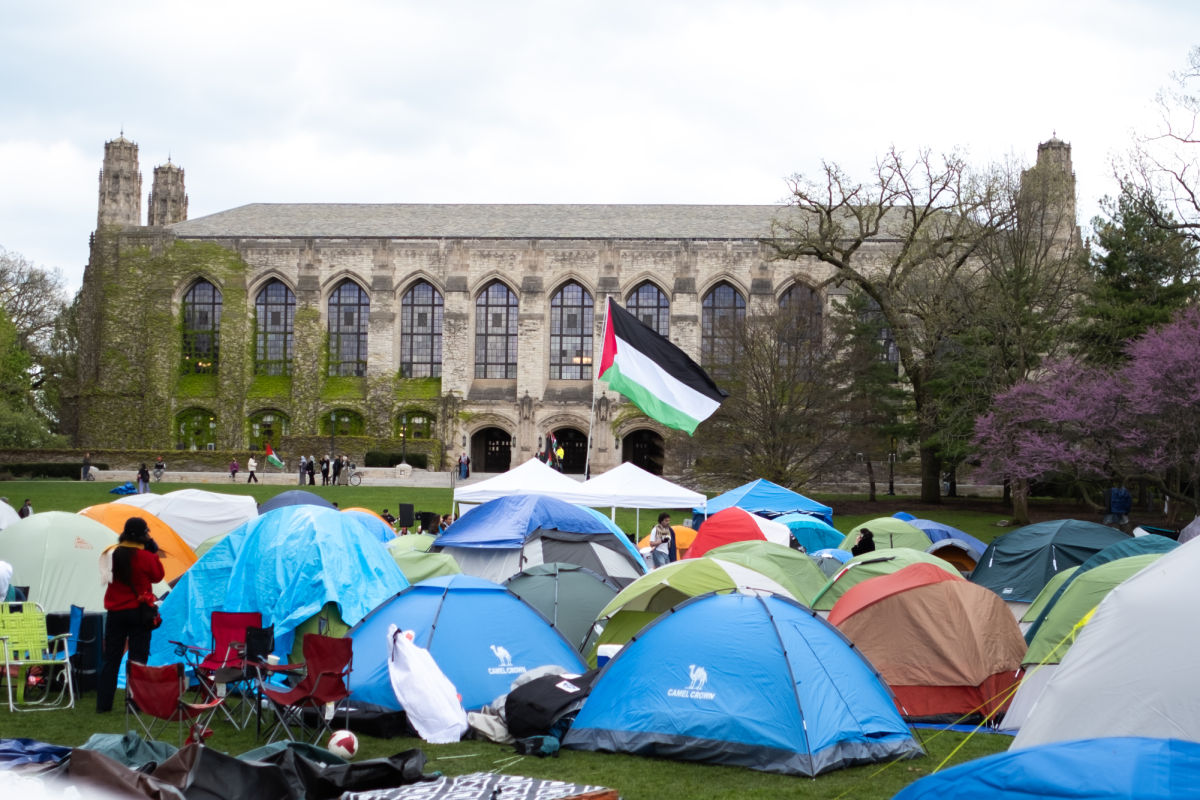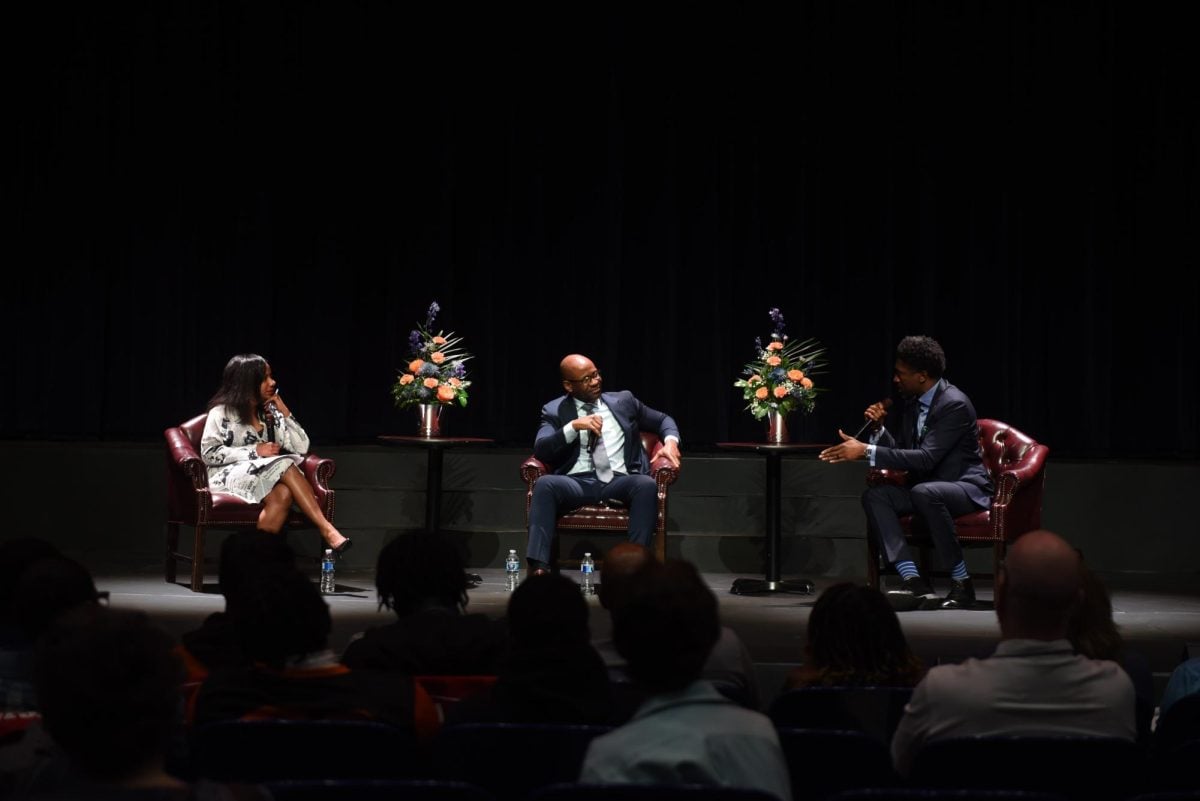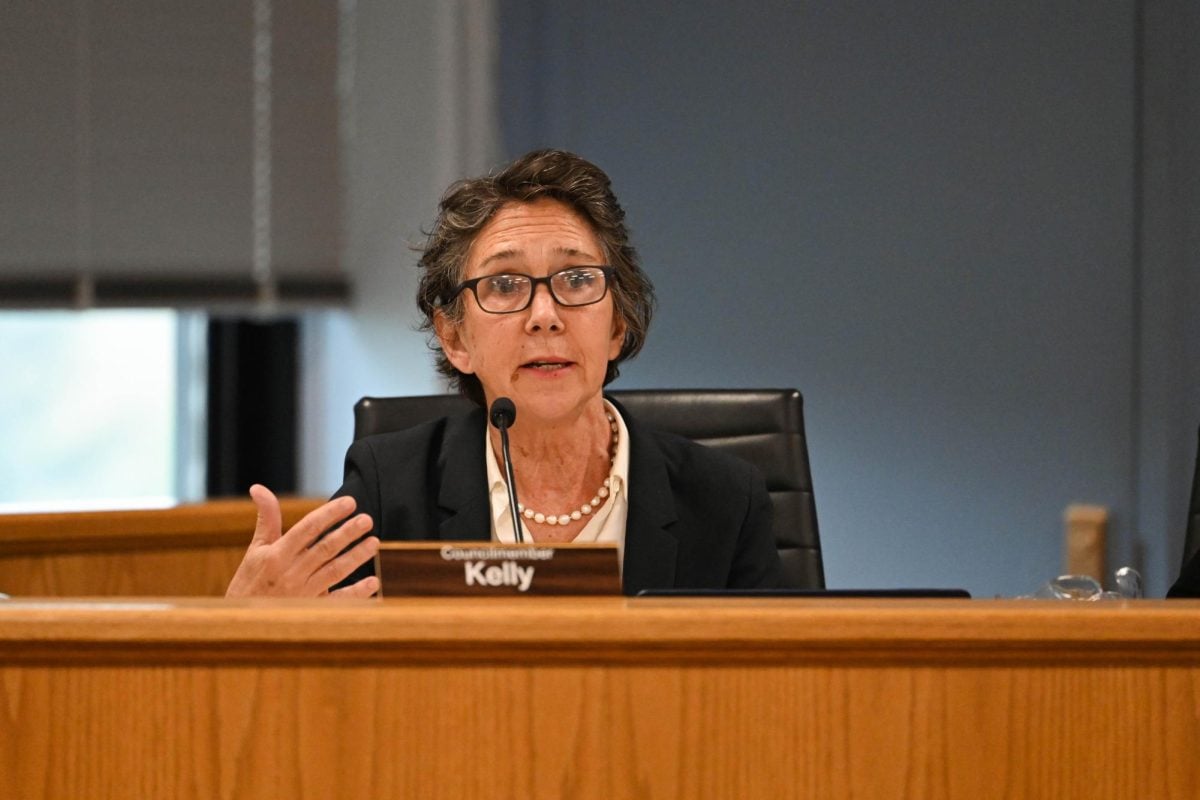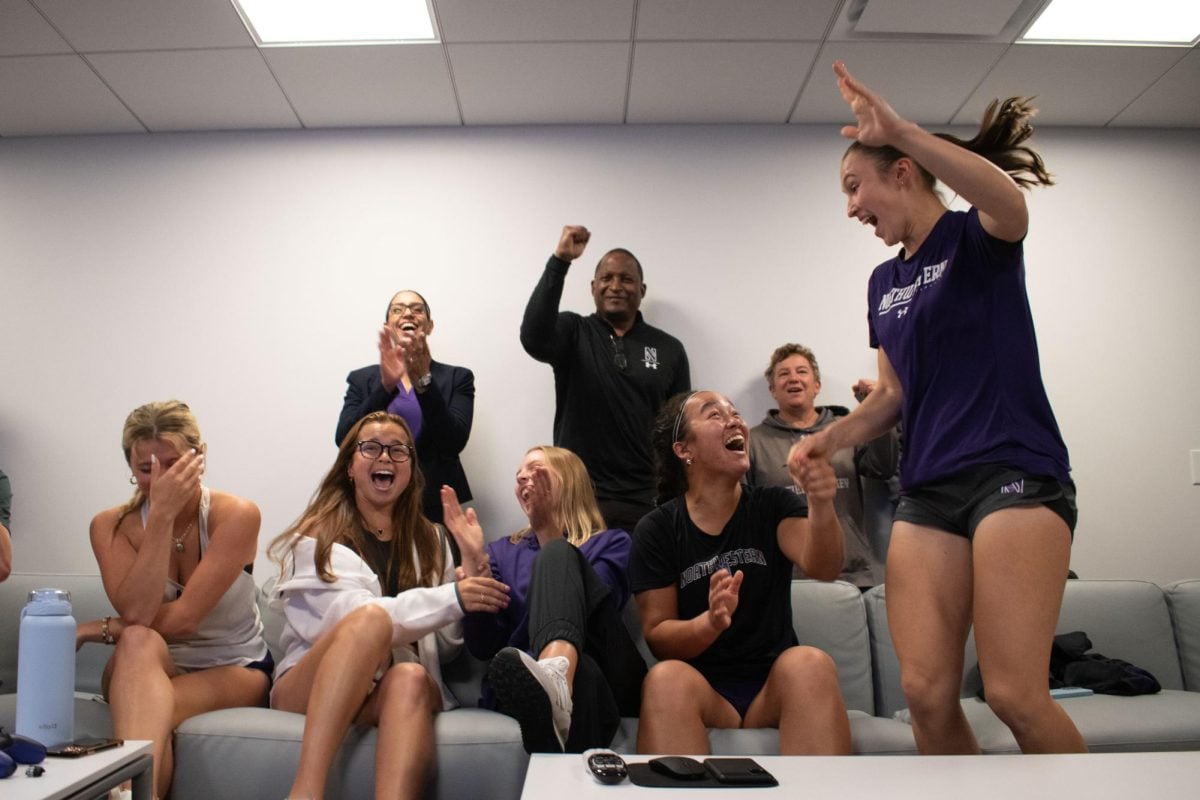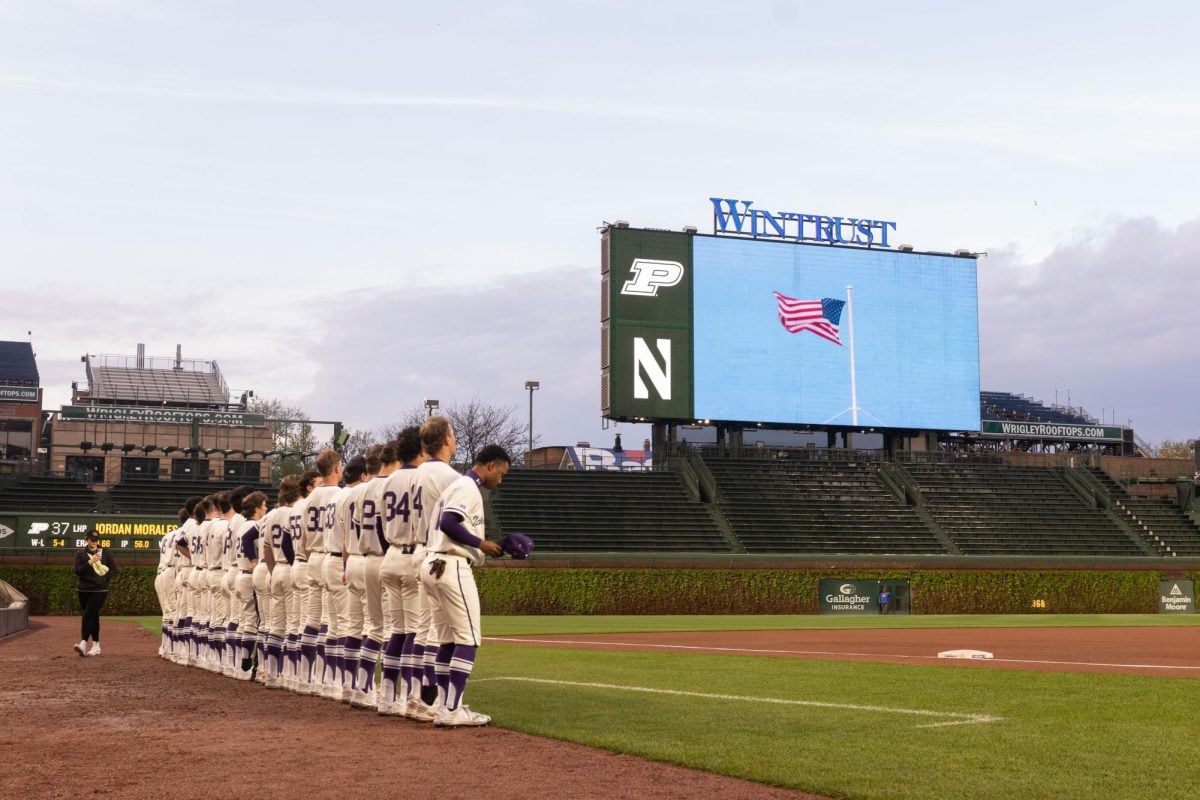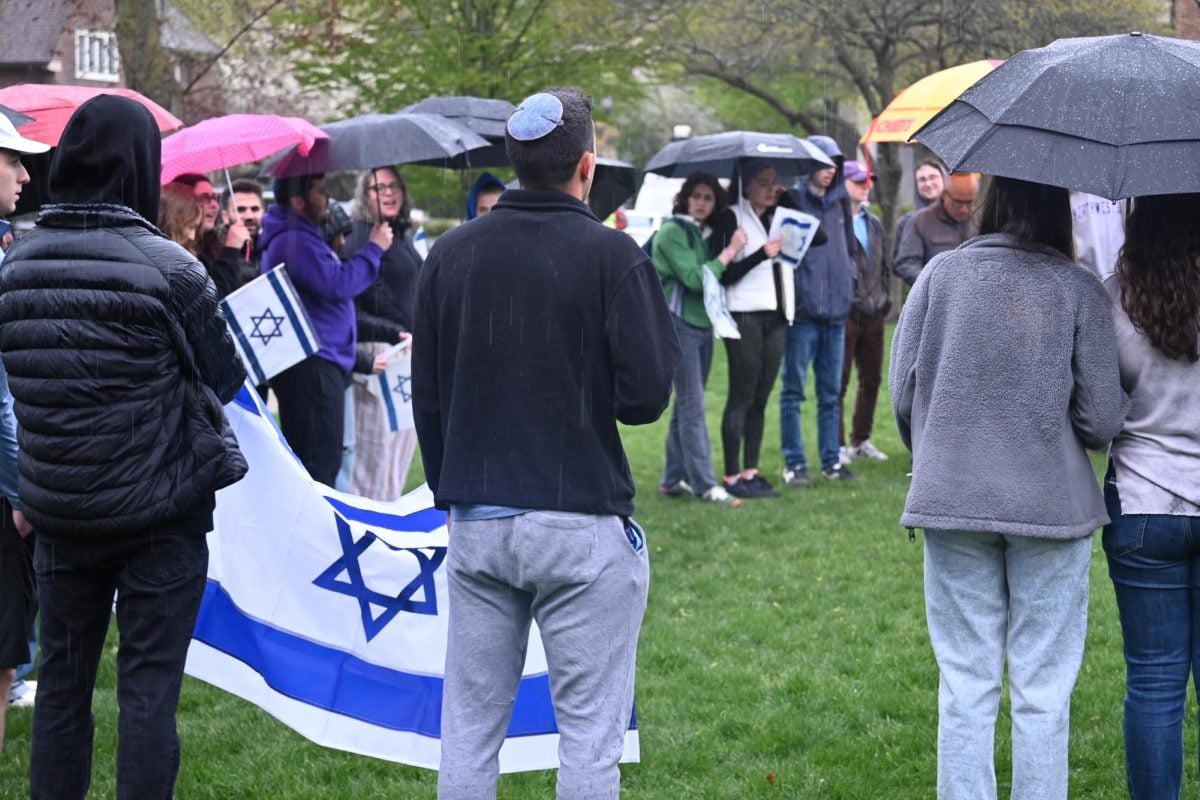Hundreds of Northwestern students and Evanston residents swarmed The Rock, the Lakefill and other south-facing outdoor spaces Monday afternoon. Equipped with protective sunglasses, the crowd turned their heads toward the sky, anxiously awaiting 2:07 p.m., when the solar eclipse would be at its strongest.
According to NASA, a solar eclipse occurs when the moon aligns between the sun and the Earth, casting a shadow over the Earth that blocks some, or all, of the sun’s light for a brief period.
Monday’s eclipse was a total solar eclipse, as the moon completely blocked the sun’s light in some areas. That moment, called totality, allowed observers to momentarily remove their glasses and safely view the sun’s “diamond ring” with their naked eyes.
This marked Bienen and Weinberg freshman Tejas Gururaja’s second solar eclipse. He saw his first in 2017 with his family in Iowa, but Gururaja said he enjoyed seeing the NU community come outside and watch this eclipse together.
“Every single Bienen student was outside on that front lawn,” Gururaja said. “Most people wore (solar eclipse) glasses, and people were sharing glasses. The eclipse was really, really cool.”
Gururaja and Bienen sophomore Hudson O’Reilly both said the picturesque 70-degree, sunny conditions were perfect for viewing the eclipse. Several groups set up picnic blankets to watch the astronomical event with friends.
The path of totality stretched through Mexico, Texas, the lower Midwest and eventually into Canada. Some NU students traveled to southern Illinois and Indiana to view the eclipse in its entirety.
Evanston was not in the path of totality, so viewers could not remove their eclipse glasses, but at 2:07 p.m. about 94% of the sun’s light was covered. When wearing the glasses, the sun looked like a slim, but still very bright, orange arc.
Third-year physics Ph.D. candidate Danyang Chen is part of an astronomy club in China. He set up a livestream so his friends from home could experience the eclipse all the way across the world.
“They love it,” Chen said. “Although I cannot show what that eclipse looks like, there’s so many people happy and enjoying it.”
Chen said he enjoys stargazing alone because it allows him to “dive into the universe,” but he likes how this event has brought the NU community together.
Some professors let their students experience the eclipse by delaying or canceling afternoon classes. Even though O’Reilly’s class was not postponed, he said seeing the solar eclipse was worth being a few minutes late.
“I think it’s fun when there’s a big community event to watch the eclipse with everyone,” O’Reilly said. “I wish I could have stayed outside longer afterwards.”
According to NASA, the next total solar eclipse that will cross the line of view in the U.S. will be on Aug. 23, 2044.
Email: [email protected]
X: @dpsamson_
Related Stories:
— City to host total solar eclipse events
— Residents, EPL prepare for Saturday’s partial solar eclipse


